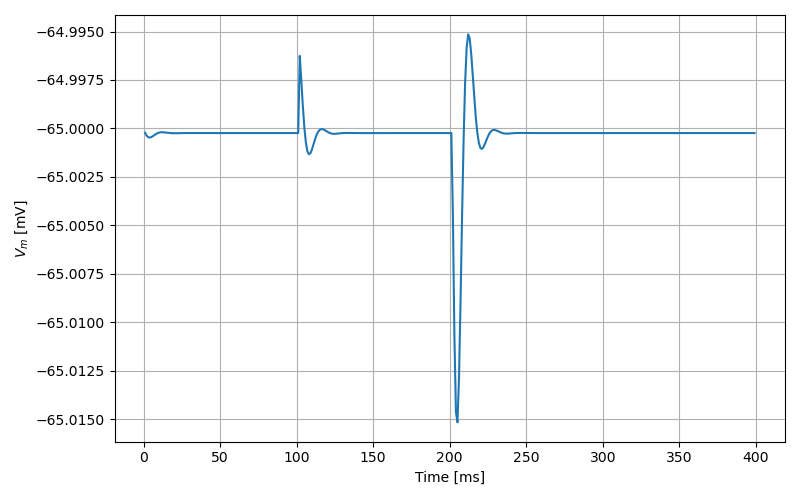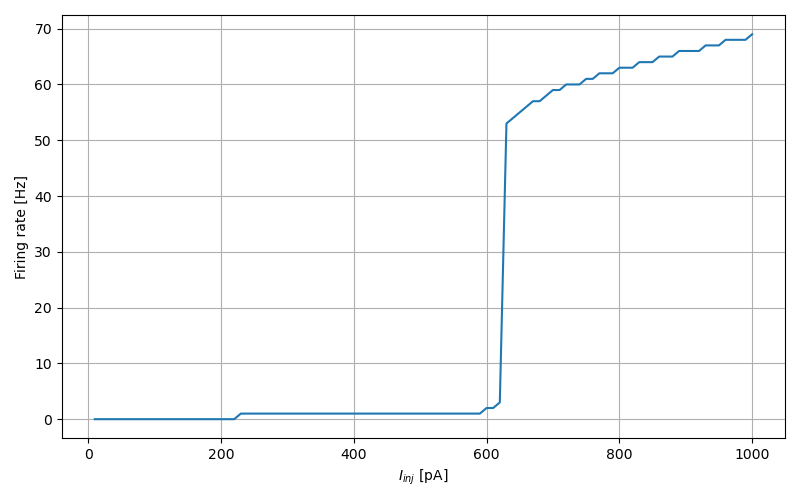hh_psc_alpha
hh_psc_alpha - Hodgkin-Huxley neuron model
Description
hh_psc_alpha is an implementation of a spiking neuron using the Hodgkin-Huxley formalism.
Incoming spike events induce a post-synaptic change of current modelled by an alpha function. The alpha function is normalised such that an event of weight 1.0 results in a peak current of 1 pA.
Spike detection is done by a combined threshold-and-local-maximum search: if there is a local maximum above a certain threshold of the membrane potential, it is considered a spike.
Problems/Todo
better spike detection
initial wavelet/spike at simulation onset
References
See also
hh_cond_exp_traub
Parameters
Name |
Physical unit |
Default value |
Description |
|---|---|---|---|
V_m_init |
mV |
-65mV |
Initial membrane potential |
C_m |
pF |
100pF |
Membrane Capacitance |
g_Na |
nS |
12000nS |
Sodium peak conductance |
g_K |
nS |
3600nS |
Potassium peak conductance |
g_L |
nS |
30nS |
Leak conductance |
E_Na |
mV |
50mV |
Sodium reversal potential |
E_K |
mV |
-77mV |
Potassium reversal potential |
E_L |
mV |
-54.402mV |
Leak reversal Potential (aka resting potential) |
refr_T |
ms |
2ms |
Duration of refractory period |
tau_syn_exc |
ms |
0.2ms |
Rise time of the excitatory synaptic alpha function |
tau_syn_inh |
ms |
2ms |
Rise time of the inhibitory synaptic alpha function |
I_e |
pA |
0pA |
constant external input current |
State variables
Name |
Physical unit |
Default value |
Description |
|---|---|---|---|
V_m |
mV |
V_m_init |
Membrane potential |
V_m_old |
mV |
V_m_init |
Membrane potential at previous timestep for threshold check |
refr_t |
ms |
0ms |
Refractory period timer |
is_refractory |
boolean |
false |
|
Act_m |
real |
alpha_m_init / (alpha_m_init + beta_m_init) |
Activation variable m for Na |
Inact_h |
real |
alpha_h_init / (alpha_h_init + beta_h_init) |
Inactivation variable h for Na |
Act_n |
real |
alpha_n_init / (alpha_n_init + beta_n_init) |
Activation variable n for K |
Equations
Source code
The model source code can be found in the NESTML models repository here: hh_psc_alpha.
Characterisation
Synaptic response

f-I curve
